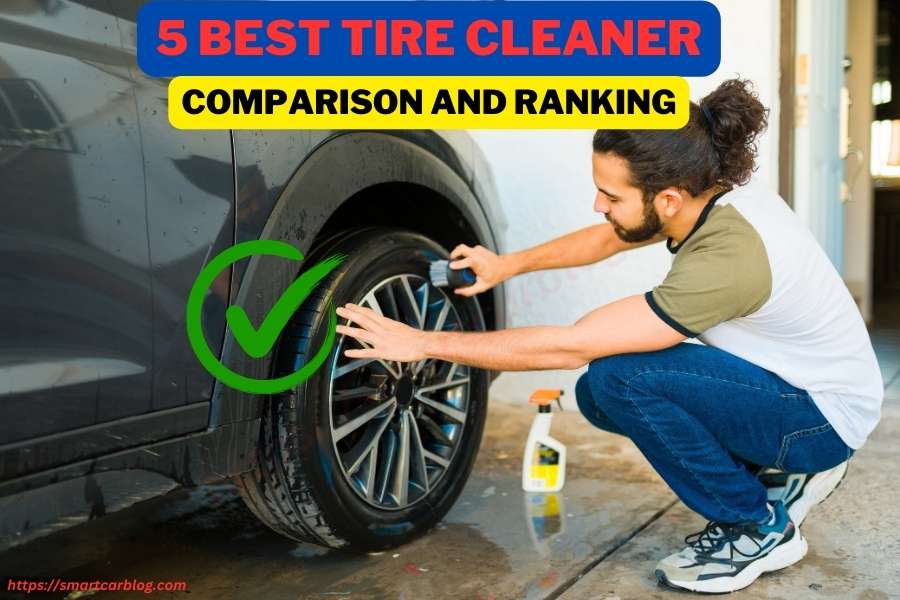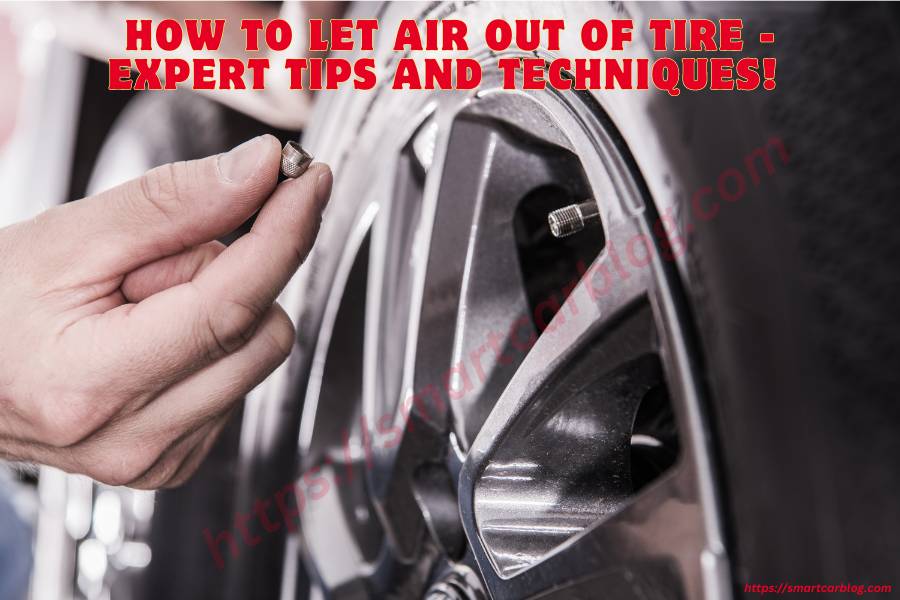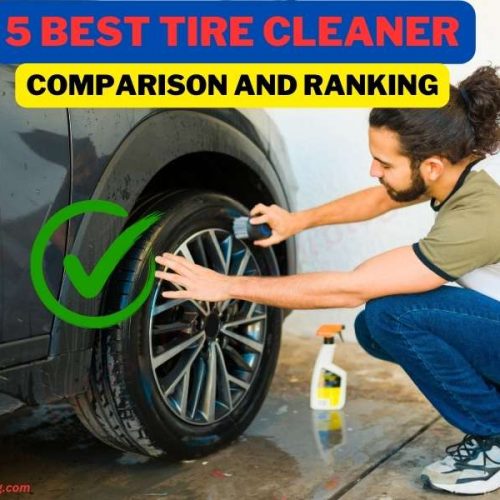Picture this: you’re on the road, cruising smoothly, but suddenly, you notice something’s off. Your tires seem a bit too inflated, affecting your ride’s performance and fuel efficiency. What do you do? Understanding How to Let Air Out of Tire? It isn’t just a handy skill; it’s a crucial aspect of vehicle maintenance that every driver should master.
In this guide, we’re exploring the nitty-gritty of deflating tires the right way. From the practical steps to the tools you’ll need and the common pitfalls to avoid, we’ve curated essential information to transform you into a tire care expert. Whether you’re a novice driver or a seasoned road veteran, knowing the right technique for releasing air from your tires is paramount.
Get ready to ship on a journey where we demystify the process, empowering you with the knowledge to ensure your tires are perfectly balanced. It’s not just about tire pressure; it’s about enhancing your safety, prolonging your tires’ lifespan, and optimizing your vehicle’s performance. So, fasten your seatbelt, and let’s explore the art and science of letting air out of tires together. Your smoother, safer rides await!
Table of Contents
ToggleUnderstanding Tire Pressure Basics
Tire pressure is not just a set of numbers; it’s a critical factor influencing your vehicle’s performance, safety, and longevity. In this section, we will explore the fundamental aspects of tire pressure, including why it matters, the effects of overinflation, and how underinflation can impact your driving efficiency.
What is Tire Pressure?
Tire pressure refers to the amount of air inside a tire, measured in pounds per square inch (PSI). Maintaining the right pressure level is crucial for even tire wear, better traction, and overall stability on the road. This subsection will explain in detail the concept of tire pressure, emphasizing its significance in ensuring a smooth and safe ride.
The Importance of Correct Tire Pressure
Maintaining the correct tire pressure is akin to providing the right foundation for a building. Properly inflated tires ensure even tread wear, stable handling, and efficient braking. This subsection will delve into the significance of adhering to the recommended tire pressure levels set by your vehicle’s manufacturer. We’ll discuss how it enhances your vehicle’s responsiveness and overall safety, making it a pivotal aspect of regular vehicle maintenance.
How Overinflation Affects Your Tires
While it might seem like more air means better performance, overinflated tires can lead to a myriad of issues. This subsection will shed light on the adverse effects of overinflation, such as reduced traction, uncomfortable rides, and uneven tire wear. Readers will gain insights into how excessive tire pressure impacts the tire’s contact patch with the road, potentially compromising their vehicle’s handling and safety.
How Underinflation Impacts Driving Efficiency
Conversely, driving with underinflated tires poses its own set of challenges. In this subsection, we will explore the consequences of insufficient tire pressure, including decreased fuel efficiency, overheating, and an increased risk of blowouts. Readers will understand how underinflation affects the tire’s structural integrity and the potential dangers associated with driving on improperly inflated tires.
By examining these aspects under the umbrella of understanding tire pressure basics, readers will acquire a comprehensive understanding of the critical role tire pressure plays in their vehicle’s performance and safety. Armed with this knowledge, they can make informed decisions regarding tire maintenance, ensuring a safer and more efficient driving experience.
How To Let Air Out of Tire?: A Step-by-Step Guide
Tire maintenance is more than just filling them with air; it’s an art that ensures a smooth and safe ride. In this section, we’ll master the technique of releasing air from tires the right way. This step-by-step guide will empower you with the knowledge to deflate your tires effectively, enhancing both safety and performance.
Necessary Tools and Precautions
Before diving into the deflation process, it’s crucial to be equipped with the right tools and take necessary precautions. This section covers the essential equipment needed for this task.
Tire Pressure Gauge: Your Essential Tool
One of the most vital tools for releasing air from tires is the tire pressure gauge. This subsection will elaborate on the importance of this tool, explaining how it helps you measure the current pressure accurately. Understanding the nuances of using a tire pressure gauge ensures that you release the precise amount of air required, keeping your tires in optimal condition.
Safety Measures to Consider
Safety should always be a priority when performing any task related to your vehicle. This subsection outlines the safety precautions you should consider before and during the process of letting air out of your tires. From wearing appropriate protective gear to choosing the right location for the task, these measures ensure your well-being and the well-being of those around you.
Identifying the Valve Stem
Before you can release air from your tires, it’s essential to identify the valve stem, the gateway to your tire’s pressure. In this section, we’ll guide you through locating the valve stem on your tire, ensuring you’re prepared to measure and adjust the air pressure accurately.
Using a Tire Pressure Gauge
Understanding how to use a tire pressure gauge properly is key to achieving the correct pressure in your tires. This section will walk you through the steps of using this essential tool. From attaching the gauge to reading the pressure to interpreting the results, you’ll gain the knowledge needed to maintain your tires at the optimal level, ensuring a safer and more efficient driving experience.
Releasing Air from the Tire
Understanding the process of releasing air from your tire is essential for maintaining optimal tire pressure. In this section, we will explore the step-by-step procedure to release air properly. From identifying the right pressure level to the actual deflation process, you will gain valuable insights into the correct technique, ensuring your tires are balanced for a safe and efficient drive.
How to Use a Valve Core Tool
A valve core tool is a specialized device designed for releasing air from tires with precision. This subsection will provide a detailed guide on how to use a valve core tool effectively. You’ll learn the intricacies of removing the valve core, adjusting the air pressure, and ensuring your tires are inflated to the recommended level. Mastering the use of this tool will enable you to maintain your tire pressure accurately, enhancing both safety and performance.
What if You Don’t Have a Valve Core Tool?
Not having a valve core tool doesn’t mean you can’t adjust your tire pressure effectively. In this section, we will explore alternative methods for releasing air from your tires. From using a standard tire pressure gauge to employing DIY techniques, we’ll provide practical solutions for those without access to specialized equipment. By understanding these alternatives, you can still maintain your tire pressure, ensuring a smooth and secure driving experience.
Checking Tire Pressure Post Deflation
After successfully deflating your tire to the desired level, it’s crucial to double-check the pressure to ensure accuracy. In this section, we will guide you on how to use a tire pressure gauge to confirm the pressure post-deflation. Understanding this step is vital as it guarantees that your tire pressure matches the recommended level, promoting safety, stability, and optimal vehicle performance.
Repeating the Process for All Tires
Deflating just one tire isn’t enough; every tire on your vehicle needs to be properly adjusted. This section will walk you through the systematic process of deflating all your tires. From front to back, left to right, understanding the uniformity of tire pressure ensures balanced handling and even wear. Following these steps diligently guarantees a harmonized driving experience, enhancing the lifespan of your tires.
Tips to Fine-Tune Tire Deflation
Fine-tuning your tire deflation technique refines your understanding of your vehicle’s specific needs. In this section, we provide expert tips to help you achieve the perfect tire pressure. From understanding the ideal pressure for different terrains to adjusting pressure based on varying loads, these insights empower you to tailor your tire deflation process. Mastering these tips ensures that your vehicle’s tires are always at their optimal state, enhancing both efficiency and safety on the road.
How Much Air Should You Let Out?
Determining how much air to let out of your tires requires a careful balance. Overinflation can lead to excessive wear and decreased traction, while underinflation can result in poor fuel economy and handling issues. The key is finding the right tire pressure for your specific vehicle and maintaining it consistently.
The recommended air pressure for many passenger cars is generally between 32 and 35 PSI (pounds per square inch) when the tires are cold. Why is it cold? As tires roll along the road, they heat up, which can increase the pressure inside them. Therefore, checking them when they’re cold gives you the most accurate reading.
A general rule of thumb is that tire pressure fluctuates by 1 PSI for every change in temperature of 10 degrees. In addition, tires lose or gain 1 PSI for every 10℉ change in temperature. That’s why it’s crucial to check your tire pressure regularly, especially during seasonal transitions.
If you find that your tire pressure is too high, you should let some air out. But how much? As a guide, if your recommended PSI is 35, then the lowest you should let your tires get before adding air is just below this number. However, this can vary depending on your vehicle’s specific requirements and the conditions you’re driving in.
Remember, always refer to your vehicle’s owner manual or the tire information placard located on the driver’s side door jamb for the precise recommended tire pressure. If in doubt, consult with a professional.
Maintaining Even Tire Pressure
Maintaining consistent tire pressure across all four wheels is essential for balanced handling, even tread wear, and optimal fuel efficiency. This section will focus on the importance of even tire pressure and offer practical tips on how to achieve and maintain it. From regular pressure checks to adjusting pressure as per load and weather conditions, you’ll learn the techniques to ensure all your tires wear evenly, prolonging their lifespan and enhancing the overall driving experience.
Common Mistakes When Letting Air Out of Tires
When it comes to deflating tires, several common mistakes can lead to issues with safety and performance. In this section, we will highlight these errors, helping you steer clear of potential problems and ensuring your tire maintenance efforts are effective.
Avoiding Over Deflation
One of the most prevalent mistakes is over-deflating tires. This subsection will explore the dangers of releasing too much air from your tires. Over-deflation can result in reduced stability, uneven tire wear, and increased vulnerability to road hazards. We’ll provide practical tips on how to avoid this common pitfall, ensuring your tires remain in optimal condition and your driving experience remains smooth and secure.
Neglecting Tire Pressure Post Deflation
Another mistake often made is neglecting to recheck tire pressure after the deflation process. This subsection will emphasise the importance of verifying the pressure in your tires once you’ve let the air out. Please do so to avoid imbalanced tire pressure affecting your vehicle’s handling and safety. We’ll guide you on the correct way to check and adjust tire pressure post-deflation, ensuring your tires are at the ideal level for a safe and efficient ride.
Additional Aspects of Tire Maintenance
Tire maintenance extends beyond just letting air out or inflating them correctly. In this section, we will explore various other essential aspects of tire care that contribute significantly to your vehicle’s safety, longevity, and overall performance. Understanding these factors ensures a well-rounded approach to tire maintenance.
Regular Tire Pressure Checks: A Must
Regular tire pressure checks are the cornerstone of proper tire maintenance. This subsection emphasizes the importance of frequent pressure assessments. We’ll delve into the reasons why regular checks are crucial, including how they promote fuel efficiency, even tire wear, and enhance vehicle stability. By making tire pressure checks a routine part of your vehicle care, you ensure a safer and smoother driving experience.
The Role of Tire Rotation in Vehicle Performance
Tire rotation is a fundamental maintenance practice often overlooked. This section will discuss the significance of rotating your tires at regular intervals. Proper tire rotation promotes even wear across all tires, extending their lifespan and improving traction. We’ll provide insights into rotation patterns and how they optimize your tire investment, ensuring your tires perform optimally and wear uniformly.
The Impact of Temperature on Tire Pressure
Temperature fluctuations have a substantial impact on tire pressure. This subsection will explore how changes in temperature, whether due to seasonal variations or long drives, can affect tire pressure. Understanding these effects is vital, as it helps you anticipate and manage pressure fluctuations effectively. By being aware of temperature-related changes, you can maintain the right tire pressure under various conditions, ensuring your safety and the longevity of your tires.
Wrapping up
In conclusion, mastering the art of letting air out of your tires is more than just a mechanical task; it’s a fundamental aspect of responsible vehicle ownership. By understanding the correct techniques, tools, and precautions, you can ensure that your tires are always at optimal pressure, promoting safety, stability, and longevity.
Throughout this guide, we’ve explored the essential steps, from identifying the valve stem to using a tire pressure gauge accurately. We’ve emphasized the importance of avoiding common mistakes, such as over-deflation, and highlighted the significance of regular tire pressure checks. Additionally, we’ve delved into broader aspects of tire maintenance, including the vital roles of tire rotation and understanding the impact of temperature on tire pressure.
Remember, maintaining the right tire pressure not only enhances your vehicle’s performance but also contributes to fuel efficiency, even tire wear, and overall road safety. By implementing the knowledge gained from this guide; you’re not just taking care of your tires; you’re ensuring a smoother, more secure driving experience for yourself and your passengers.
So, the next time you find yourself needing to adjust your tire pressure, approach the task with confidence, armed with the insights shared in this guide. Here’s to safe travels and well-maintained tires, ensuring your journeys are as smooth as the road beneath you. Safe driving!
FAQ
Q: How to Release Air from Tire Without a Tool?
A: Releasing air from a tire without a dedicated tool can be challenging, but it’s possible. One method is to use the edge of a small rock or the back of a sturdy knife to press the pin inside the valve stem. Be cautious not to damage the valve stem while attempting this method.
Q: How to Let Air Out of Tire Without a Screwdriver?
A: Without a screwdriver, you can use a valve stem removal tool or even a pair of pliers to press down on the pin inside the valve stem gently. This method requires careful handling to avoid over-deflation or damaging the valve stem.
Q: How to Let Air Out of Tire Without a Gauge?
A: While lacking a tire pressure gauge, you can release air in short bursts and then check the tire’s firmness by pressing your thumb against the tread. This method is less precise but allows you to estimate the pressure level.
Q: How do you Take Air Out of the Tire at a Gas Station?
A: Gas stations usually have air compressors equipped with pressure gauges. Use the compressor to add or release air as needed. If you’re releasing air, follow the same steps as you would at home, ensuring you don’t over-deflate the tire.
Q: How to Let Air Out of Tire on a Bike?
A: Releasing air from a bike tire is similar to a car tire. Use a valve stem tool or a small object like a paper clip to press down on the pin inside the valve stem. Monitor the pressure by squeezing the tire gently; this helps avoid underinflation.
Q: How to Let Air Out of Tire With a Screwdriver?
A: While not recommended due to the risk of damaging the valve stem, if you have no other option, use a flat-head screwdriver to press the pin inside the valve stem. Exercise extreme caution to prevent accidents and ensure you don’t puncture the tire.
Q: Letting Air Out of Tires Prank: How Is It Done?
A: Letting air out of someone’s tires as a prank is both dangerous and illegal. It can lead to accidents and significant damage. We strongly discourage engaging in such activities, promoting responsible behavior and safety on the roads.
Q: How to Take Air Out of Tire With a Machine?
A: Tire shops and service stations have tire machines equipped with deflation features. If you need to release air from a tire, take your vehicle to a professional service provider. They have the expertise and tools to adjust tire pressure accurately and safely.




 Welcome to SmartCarBlog.com! I’m Rashel Miajee, The proud founder of smartcarblog.com. This is a part of
Welcome to SmartCarBlog.com! I’m Rashel Miajee, The proud founder of smartcarblog.com. This is a part of 


